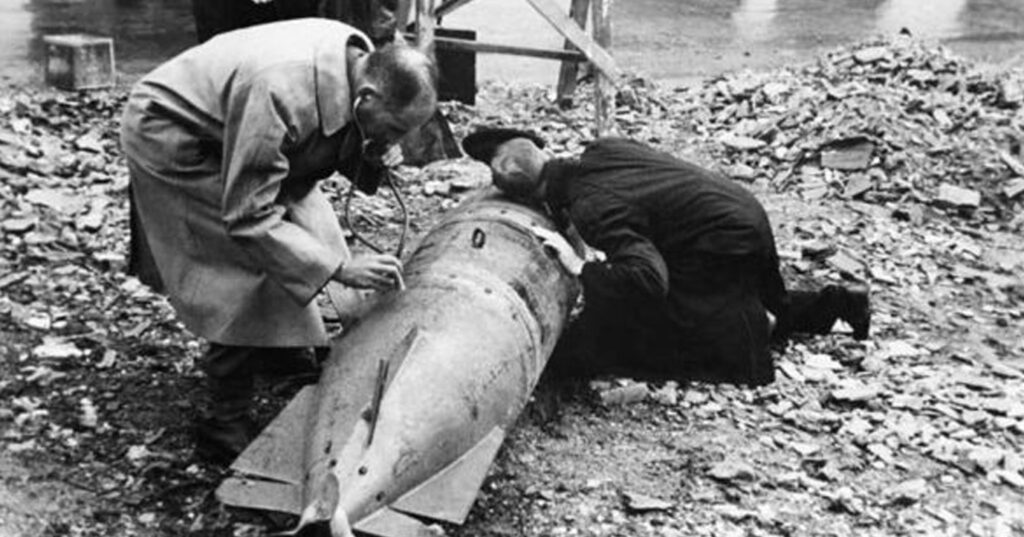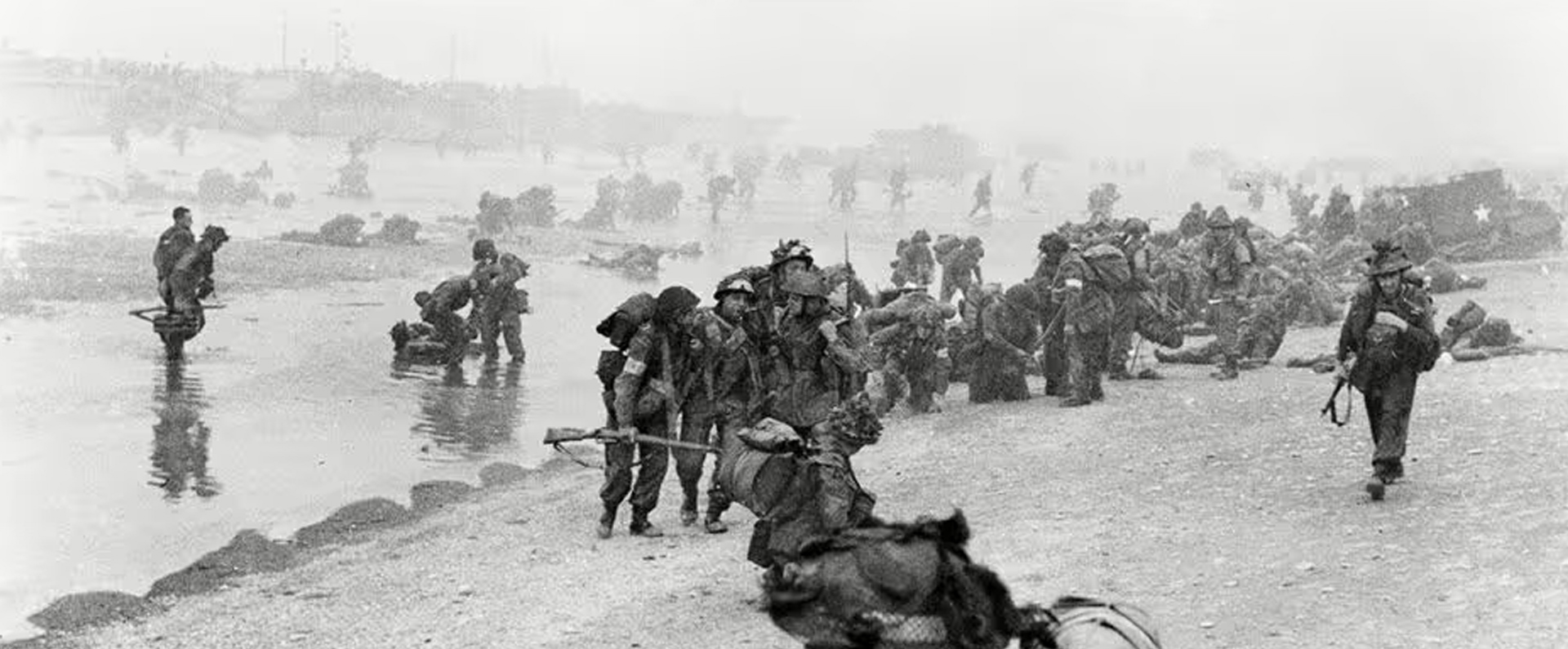
Published in the Daily Express on 30 January 2015.
Colonel Bertram Stuart Trevelyan Archer
Stuart Archer won the George Cross for his courage as a bomb disposal expert. Next week he will pass a milestone he once seemed unlikely to reach.
At the height of the Blitz in 1940, the chances of Acting Lieutenant Stuart Archer seeing his 26th birthday looked remarkably slim.
The courageous young officer was dealing with several unexploded bombs almost every day including many with a deadly new form of delayed-action fuse.
Yet Stuart “Archie” Archer not only survived the Second World War but, next week, he will become the first recipient of the Victoria Cross (VC) or George Cross (GC), Britain’s two most prestigious gallantry awards, to celebrate a 100th birthday.
Remarkably, that landmark birthday will take place almost 75 years after the exploits for which he was rewarded with the GC, Britain and the Commonwealth’s most prestigious decoration for gallantry not in the face of the enemy.
Bertram Stuart Trevelyan Archer was born in Hampstead, north London, in February 1915.
Aged 21, he qualified at the youngest possible age as an associate of the Royal Institute of British Architects.
He pursued a career as an architect all his working life – with the exception of his time in the Army.
In January 1940, the year after getting married, he was commissioned as an officer into the Corps of Royal Engineers and was posted to 553 Field Company.
Archer quickly became a veteran bomb disposal expert and, by the end of August 1940, had already dealt with some 200 bombs.
This included having to tackle the first enemy bomb with a new type of delayed-action fuse.
The arrival of the delayed-action fuse meant that 80 hours were meant to elapse between the bomb being dropped, or found, and the device being tackled – unless there were exceptional circumstances.
The events of September 2 1940 were, most certainly, exceptional.
To start with, they took place after four of the most sustained days of bombing of the entire war.
The Luftwaffe’s attacks on Britain had started shortly after the Dunkirk evacuations, but August 29 marked the start of a sustained period of enemy bombing which resulted in there being 2,500 unexploded bombs waiting to be tackled within 48 hours.
During this period of heavy bombing, Lieutenant Archer, plus a sergeant from the Royal Engineers and twelve Sappers, were based at Cardiff.
It was around 9am on September 2 that Lieutenant Archer was told that a large number of unexploded bombs were hampering attempts by fire-fighters to control a major blaze at the Anglo-Iranian Oil Company’s refinery at Llandarcy, near Swansea.
The situation he found shortly after arriving at the oil refinery at around 10am was more hazardous than even he had encountered before.
The officer with the local bomb disposal section led him to a storage area where some oil tanks were already burning fiercely: there were four unexploded bombs, including one directly under an oil tank.
Archer chose to tackle this bomb first, judging this to be the best way to prevent further fires from breaking out.
Although this oil tank was not alight, two others just 50 and 80 yards away were already in flames.
These were generating such intense heat that steel was melting.
To add to their already considerable difficulties, the bomb that Archer and his team were tackling had embedded itself diagonally in the corner of the concrete plinth at the base of the oil tank.
With the heat generated from the two nearby burning oil tanks bearing down on them relentlessly, he and his men had to work in short, sharp stints.
He figured out that 15-minute shifts were ideal because they reduced the chance of one of his men making a fatal mistake.
After two hours of the most tense and difficult work, and with flames and smoke spiralling hundreds of feet into the sky, one of the three other bombs – the one nearest to the device they were working on – went off.
The midday explosion took place 150 yards from where the men were working, forcing them to throw themselves on the floor in case they were hit by debris, flames or boiling oil.
At around 2 pm, another of the two other bombs in their area exploded but again the bomb disposal team escaped injury.
The bomb that Archer and his team were tackling was a 550lb device, the casing of which had been split on impact with the ground.
This left the main explosive so exposed that it was clearly visible through the crack.
The fuse box had also been ripped away and there was a tangle of wires visible too.
Perhaps the most remarkable aspect of the whole operation was that Archer spent most of the time that he was defusing the bomb, hanging upside down and reaching deep into the device at full stretch.
Initially, he took off the circular base plate.
Then he saw that it was powder explosive, which he scooped out of the way.
Next, he examined the fuse pocket.
As he gripped the exposed wires with pliers, he pulled until the fuse came away.
This exposed the clockwork delayed-action apparatus at the rear.
Then he unscrewed the “gaine” mechanism and placed the clockwork components in his pocket.
When he looked again into the tube and shook it gently, another mechanism with another gaine came into view.
He realised he was looking at a sophisticated booby trap that had been intended to kill any bomb disposal expert who was seeking to make safe the device.
Moments after Archer unscrewed this second gaine there was a crack and a flash – which he realised had been caused by the detonation of a small cap.
The worst of the bomb disposal team’s ordeal was over by 2.50pm.
By then, they had been working in the hottest, tensest and most dangerous of circumstances for more than four and a half hours.
Lieutenant Archer emerged with the distinction of being the first man to pull out a fuse from an anti-withdrawal booby trap – and live to tell the tale and his GC was announced on September 30 1941 Archer, who rose to the rank of lieutenant colonel, survived the war and later became closely involved with the Victoria Cross and George Cross Association, serving as its chairman from 1994 until 2006, after retiring as an architect.
Lieutenant Colonel Archer, who was also been awarded the OBE, lives in his own flat in north London, but his health is frail.
His wife Katherine, known as Kit, died 20 years ago.
However, he has three grown-up children, ten grandchildren and eleven great-grandchildren.
His large family will gather to celebrate his landmark birthday.
I am sure that I speak for many people when I wish him a very happy 100th birthday on February 3.
For he thoroughly deserves his place in that most elite of clubs: “the bravest of the brave”.
Read this article in the Daily Express
For more information, visit:
LordAshcroftOnBravery.com


